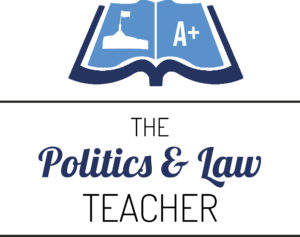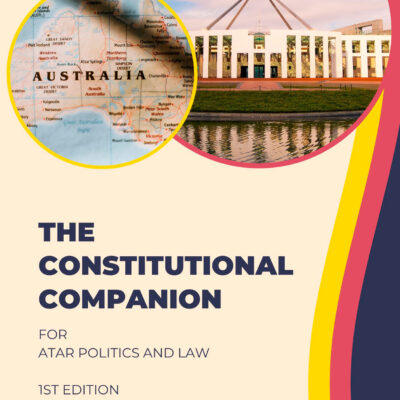Influenced by its British heritage, Australia adopted the Westminster system and constitutional monarchy for its national political system in 1901. The Westminster system is characterised by the ‘structural fusion’ of the executive and legislative branches that results from the Crown being part of both branches and the requirement that ministers be members of Parliament. As a democracy, the Australian political system sought to uphold democratic principles, especially the separation of powers doctrine. Yet, the fusion of two branches – which is a defining feature of the Westminster system – seems to undermine the separation of powers doctrine.
However, the Westminster system achieves a ‘functional separation’ of the executive and legislative branches – rather than a US-style ‘structural separation’. It does so through conventions. Westminister conventions are firmly established unwritten practices, customs and traditions, rather than codified constitutional rules. They are also a defining feature of the Westminster system.
Therefore, the ‘structural fusion’ and ‘functional separation’ must be understood together to fully appreciate how Australia achieves and upholds the separation powers doctrine. Once the separation of power is grasped, the checks and balances necessary for the doctrine to work in practice can be understood.
Australia’s Constitution vests the Crown and the Governor-General with formal (i.e. legal) executive power in Section 61. Section 64 says that ministers must be members of Parliament. Together, these two sections specify constitutional monarchy and the Westminster system. It is left to conventions to achieve a ‘functional separation’ by allocating…
- Non-executive functions to private members of Parliament, and
- Executive tasks to ministers.
Conventions also control how the Governor-General exercises legal executive power.
The fusion of the executive and legislative branches is apparent as members of the executive, including the Prime Minister and ministers, are simultaneously members of Parliament. This fusion and the conventions that create a separation ensure that the executive is made by and directly accountable to the legislature, encouraging a government responsive to the people’s representatives. Westminster conventions and parliamentary procedures ensure majority rule and accountability.
Conventions & the Separation of Executive & Legislative Branches
Unwritten constitutional rules dictate that private members of Parliament perform strictly non-executive functions, while ministers perform executive tasks.
Private Members
Private members of Parliament have three functions:
- A legislative function,
- A representative function, and
- An ‘oversight of the executive’ function.
They perform these functions by attending parliamentary sessions and serving on parliamentary committees. They are barred from executive committees.
Parliamentary processes and procedures govern their work in each of the three functions above. It is customary for parliament to make its own rules for these purposes.
There are three classes of private members:
- The Opposition is a specialised group of private members who organise themselves as an alternative government (a “shadow cabinet”). They have a significant role in function 3 above by holding the executive to account.
- Backbenchers are private members who sit on the parliamentary benches behind the ministers and opposition shadow ministers. They belong to the major political parties, which demand their partisan loyalty – a fact that diminishes their capacity to independently perform the three functions above.
- Crossbenchers are private members who sit on the curved benches at the back of the chamber between the government and the Opposition. They are either independents or members of minor political parties. They can have significant legislative and executive oversight roles (1 & 3 above) depending on the balance of power within the chamber.
Ministers are distinguished from the above by having been commissioned by the Governor-General as a minister under Section 64, and by their membership of the Federal Executive Council and the Ministry.
Ministers
The government and its ministers are drawn from the largest party in the lower house, whose leader is the Prime Minister. Conventions govern its formation and operation.
Ministers have three functions:
- A legislative function,
- A representative function, and
- Executive functions.
They serve on executive committees and are barred from parliamentary committees.
Ministers belong to:
- The Ministry is all Members of Parliament with a Section 64 executive commission.
- The Federal Executive Council is a constitutional executive body created by Section 62 to which all ministers belong. The Governor-General chairs the Federal Executive Council, making it the essential link between ministers and the legal executive power vested in the Governor-General.
- The Cabinet is the most important committee of the executive. The Cabinet’s permanent members are the Prime Minister and senior ministers. Junior and assistant ministers form an “Outer Cabinet” and are temporarily co-opted into the Cabinet when it discusses their areas of executive responsibility. The Cabinet is governed by ‘cabinet conventions’, which include secrecy and solidarity. Cabinet conventions are Westminster conventions that ensure the functional separation of the executive branch.
The Ministry and Cabinet are the ‘parliamentary executive’. The Federal Executive Council and the Governor-General are the ‘constitutional executive’. The parliamentary executive exercises real executive power, while the constitutional executive formalises its decisions, making them legal.
Private Members and Ministers are Separate
From the above sections, it is apparent that private members of Parliament and ministers share legislative and representative functions – because they are all MPs. It is also apparent that two aspects of the Westminster system and its conventions separate them:
- Private members are excluded from executive committees and ministers are excluded from parliamentary committees.
- Only ministers are members of the Federal Executive Council, which is the body that advises the Governor-General on executive matters. Private members cannot advise the Governor-General, in whom executive power is legally vested by Section 61 of the Constitution.
Checks and Balances
Private members hold the executive accountable through various parliamentary processes and procedures, such as Question Time, where ministers are directly questioned on policy and executive operations. Scrutinising money bills and participating in parliamentary committees examining aspects of executive operations are other forms of executive accountability carried out by private members of Parliament. The executive introduces most legislation, so private members’ participation on legislative committees is another form of executive accountability. These are the ways the Westminster system introduces checks and balances – which are necessary for the separation of powers doctrine to work in practice.
The following is a list of parliamentary processes and procedures that private members employ to check and balance executive power:
- Question Time: Where ministers are questioned about their policies and actions.
- Parliamentary Debates: For open discussion on government actions and proposals. Examples include:
- Adjournment Debates: For raising issues about government actions and policies at the end of each parliamentary day.
- Urgency motions: For raising urgent matters for immediate discussion.
- Matters of Public Importance: Raising current issues for debate.
- Parliamentary Committees: For investigating specific matters of policy or administration. Examples include:
- Senate Estimates Committees: Scrutinise the government’s budget and expenditure.
- Joint Public Accounts Committees: Focus on auditing government spending and monitoring the performance of the public service.
- Ministerial Responsibility: Holding ministers individually and collectively accountable for their conduct and departmental actions.
- Collective: Votes of No Confidence express a lack of confidence in the government. A government is expected to resign if a vote of no-confidence succeeds.
- Individual: Censure Motions express a lack of confidence in a specific minister. Successful censure motions require a minister to resign.
- Private Members’ Bills and Motions: Challenge or propose alternatives to government policies.
- Parliamentary Privilege: Ensure members may speak freely without fear of legal repercussions.
The Opposition
The Opposition is a particular class of private members – see above – who focus on the ‘oversight of the executive’ role. They also present the public with a ‘collective of private members’ who could be an alternative to the current executive. The Opposition is composed of the leader and senior members of the second largest party in the lower house.
There is no legal or constitutional requirement that the Opposition organise itself as a “Shadow Cabinet”. It just makes sense to look like a government to be seen as a viable alternative to the current government when the next election occurs. The “Shadow Cabinet” structure also helps the Opposition efficiently focus on the accountability of individual ministers.
Opposition MPs specialise in critiquing the government in every aspect of its operation, including its priorities, decisions, policies, spending, conduct, and competence.
- Opposition Organisation: The Opposition Shadow Cabinet is modelled on the actual Cabinet to mirror the government. This structure helps it look like an alternative government and helps ‘shadow ministers’ scrutinise real ministers in their portfolio areas.
- Opposition Tactics: Enable the Opposition to influence the parliamentary agenda to exert pressure on the government. Examples include refusing to follow the ‘pairs’ convention and moving no-confidence motions to trigger debate about executive operations.
Students of the Australian political system must not lose sight of the fact the Opposition is a collection of private members of Parliament organised in a particular way to achieve the ‘oversight of the executive’ function.


